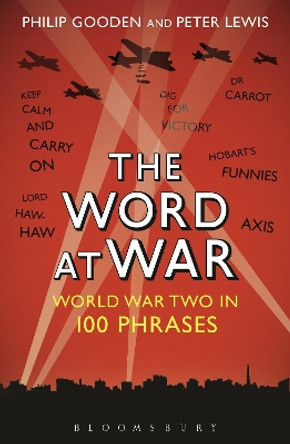Description
An original take on a familiar subject, this book explains how the language of war, at home and abroad, came to pervade our everyday speech.
About the Author
Philip Gooden read English at Magdalen College, Oxford, and then taught at secondary school level for many years. In 2001 he became a full-time writer. Philip writes books on the English language as well as historical crime novels and mysteries. He was chairman of the Crime Writers' Association in 2007-8 and is part of the writing collective, The Medieval Murderers. He has also written the popular Who's Whose?: A No-Nonsense Guide to Easily-Confused Words, published by Bloomsbury. Peter Lewis taught German at St Anne's College, Oxford and worked as a publishing commissioning editor before becoming a freelance translator, writer and project manager. Recent translations include The Mad Science Book (Quercus) and Roman Elegy (Haus Publishing).
Reviews
This eloquent pair of authors are a language lover's dream. The book captures the pugnacious parlance of wartime in all its oxymorons, its inventive acronyms, its clever rhetoric, its racy slang and its appalling euphemisms. There are surprises, too: humour, sexiness and neology: Jeep, SPAM, flak, kamikaze and mega, to name a few linguistic creations. The enduring semantic legacy, over seven decades, teaches us a lot about how we communicate in a crisis; something that's particularly pertinent today. -- Gary Nunn * Guardian 'Mind your language' columnist *
Much of the value in this little book lies in the similarly extensive background details that Gooden and Lewis supply throughout. -- Michael Quinion * World Wide Words *
This wonderful book defines the wartime words and phrases that still resonate in the language of peacetime. -- Iain Finlayson * Saga Magazine *
Book Information
ISBN 9781472922489
Author Peter Lewis
Format Paperback
Page Count 256
Imprint Bloomsbury Information
Publisher Bloomsbury Information
Weight(grams) 254g

![The Word at War: World War Two in 100 Phrases by Peter Lewis 9781472922489 [USED COPY] The Word at War: World War Two in 100 Phrases by Peter Lewis 9781472922489 [USED COPY]](https://cdn11.bigcommerce.com/s-zkx5lhzlf8/images/stencil/608x608/products/4805264/4804509/9781472922489__82960.1721753482.jpg?c=1)

![The First World War in 100 Objects by Peter Doyle 9780752488110 [USED COPY] The First World War in 100 Objects by Peter Doyle 9780752488110 [USED COPY]](https://cdn11.bigcommerce.com/s-zkx5lhzlf8/images/stencil/444x444/products/4859596/4858826/9780752488110__94571.1722048285.jpg?c=1)
![War in the Trenches: Remembering World War One by Peter Hicks 9780750283762 [USED COPY] War in the Trenches: Remembering World War One by Peter Hicks 9780750283762 [USED COPY]](https://cdn11.bigcommerce.com/s-zkx5lhzlf8/images/stencil/444x444/products/5981937/6058963/9780750283762__76975.1729911609.jpg?c=1)
